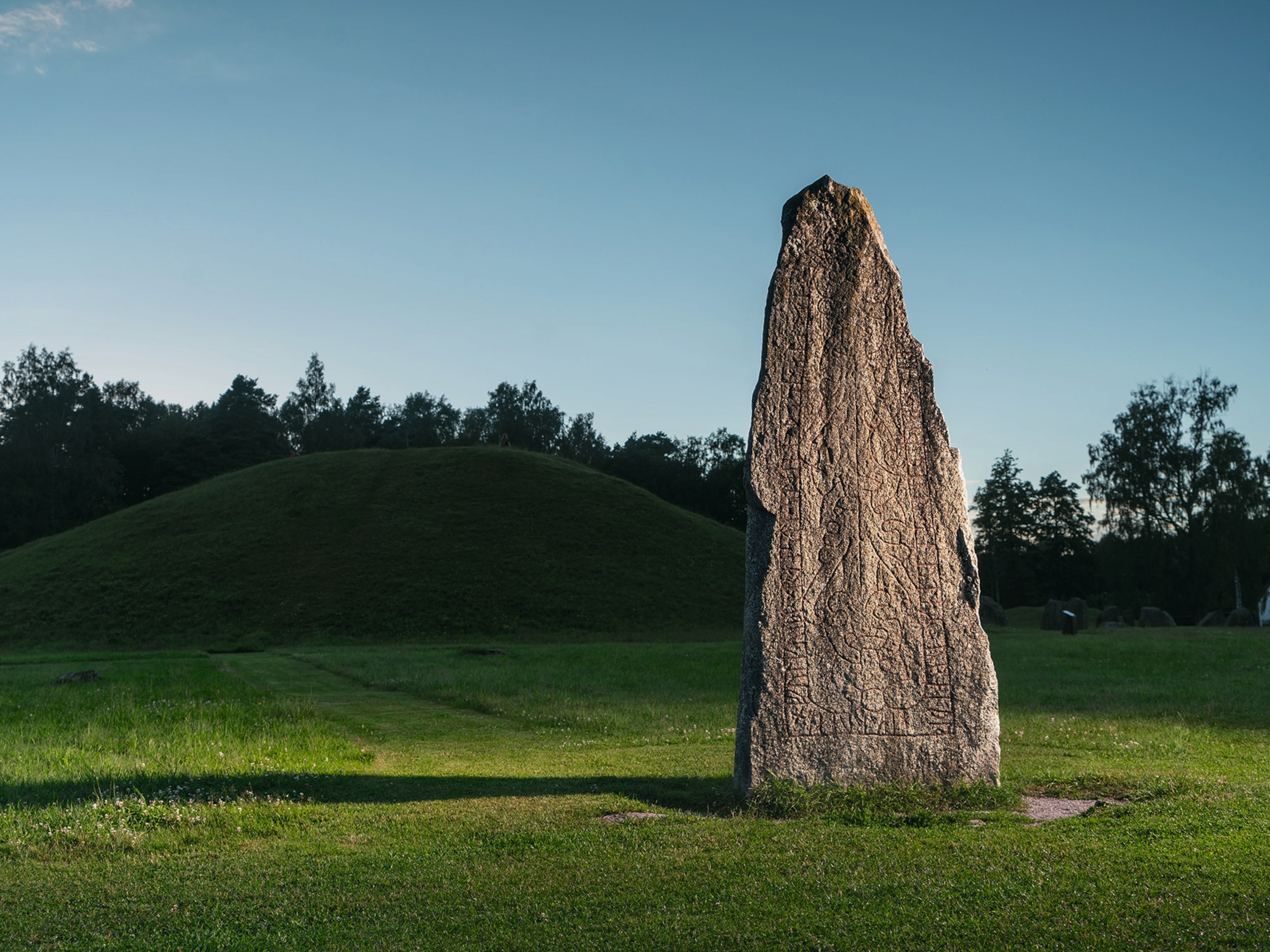
Rest in … compost? These ‘green funerals’ offer an eco-friendly afterlife.
Traditional burial and cremation pollute the ground and emit carbon dioxide. People are looking for new options.
You may have seen the headlines: Earlier this year, New York State became the sixth in the nation to legalize something called human composting. In 2022, Archbishop Desmond Tutu chose to be cremated not by flame, but by water, in a process called alkaline hydrolysis. In 2019, actor Luke Perry was buried in a “mushroom suit” made of cotton and seeded with mushroom spores. All were part of a push to make the afterlife more eco-friendly.
(In Japan, a Buddhist Funeral Service for Robot Dogs)
Death care has remained largely unchanged in the United States ever since embalming and burial became the de facto method as far back as the Civil War, says Caitlin Doughty, mortician and founder of death care advocacy nonprofit Order of the Good Death. Most people don’t even have access to other options: Burials and cremation are the only methods that are legal in all 50 states.
Traditional burial methods harm the planet in various ways. Embalming slows the decay of a person’s body so that it’s presentable at a funeral—but after burial, the chemicals used for embalming leach into the ground. Caskets require enormous amounts of wood and metal, and cemeteries often build concrete vaults in the ground to protect them. Even cremation requires a lot of fuel, and generates millions of tons of carbon dioxide emissions a year.
Now, however, a variety of theoretically more sustainable death care alternatives are increasingly being offered around the country. Here’s what you need to know.
Green or natural burial
Green burials have been used as long as humans have been burying bodies. Both Native American and Jewish communities traditionally use green burials. But in recent generations, they have fallen out of fashion as people opted for more elaborate burials. Green or “simple” burials became more commonly used for the poor and wards of the state.
These are generally defined as burials using materials that are both nontoxic and biodegradable. In a typical green burial, the deceased is dressed in a 100 percent cotton shroud and buried in a plain pine box.
In some cases people choose to “become” a tree in death by having a tree planted over their plot. (However, the tree burial pods that kicked off this trend—in which bodies are wrapped in an egg-shaped pod that supposedly feeds the roots of a young tree—are not available for commercial use and it’s unclear if they are even viable.)
(In these cemeteries, nature also rests in peace.)
Almost every cemetery in the United States has an area reserved for green, or “simple” burials, according to Ed Bixby, president of the Green Burial Council (GBC), which helps educate and certify burial grounds meeting sustainability standards. On some burial properties, plots are marked via GPS and a natural stone marker—otherwise, the area is left to grow wild, becoming less like a cemetery and more like a nature preserve full of life.
Most families who choose natural burial also forgo embalming, often seeing the process as overly invasive, when refrigeration alone adequately preserves the body. Others opt for gentler embalming fluids made without formaldehyde, which are becoming increasingly available.

But could these simple burials contribute to the spread of disease or pollution of the land? The data from existing research on traditional cemeteries “doesn't indicate that bodies are dangerous in and of themselves,” says Lee Webster, director of New Hampshire Funeral Resources and Education and former director of GBC, adding that vaults, chemicals, and non-organic containers used in traditional burial do contribute to pollution.
Further, the WHO has found “no evidence that corpses pose a risk of epidemic disease—most agents do not survive long in the human body after death.”
Still, it’s unclear if some of the newer variations of green burials are effective. For example, the brand responsible for Luke Perry’s mushroom suit claimed it would neutralize toxins and give nutrients back to the earth. Years earlier, however, the suit’s maker had hired mortician Melissa Unfred to study the suit—Unfred found there was no evidence the suit had any real effect.
Water cremation
One cremation creates an average of 534 pounds of carbon dioxide, one scientist told Nat Geo in 2016. Toxins from embalming fluid and nonorganic implants like pacemakers or tooth fillings also go up in smoke. Water cremation—also known as aquamation or alkaline hydrolysis—produces the same result with significantly less environmental impact and for some, a spiritual benefit.
(Greenhouse gases, explained.)
Native Hawaiians practiced a form of water cremation for thousands of years. They would use heated volcanic water to break down the bodies of their loved ones, says Dean Fisher, water cremation consultant and former director of Mayo Clinic’s donated body program. Then they would bury the remaining bones, where they believed the soul’s spiritual essence was stored.
The tradition has fallen out of practice in recent years—but in July 2022 Hawaii legalized water cremation, putting the tradition back within reach.
Water cremation machines work by pumping a heated alkaline fluid around a body for four to six hours, exponentially accelerating the natural decomposition process. Bodies can be embalmed or unembalmed and dressed in any material that is 100 percent natural. After the body breaks down, only bones and non-organic implants remain. The bones are dried, crushed, and returned to the family.
The only byproduct of water cremation is nontoxic, sterile water that can be recycled into the local water supply—270 gallons of it, or slightly less than what the average American household uses in a day. There are no emissions into the ground or air.
But water cremation does have its drawbacks. For one, traditional cremations are more readily available, faster, and usually less expensive. Water cremation also requires energy to heat the water and run the pump, although a Dutch study from 2011 showed that’s only 10 percent of the energy used in flame cremation.
Further, some critics of water cremation argue it is immoral or disrespectful to the deceased, akin to flushing your loved one down the drain. However, advocates counter that water cremation simply accelerates the natural decomposition process and is no different from the blood from routine embalming that also goes through water treatment to be neutralized.
Either way, water cremation appears to be gaining steam in the U.S. It is currently legal in 28 states—and 15 of them approved it within the last decade.
Human composting
Human composting turns bodily remains to soil through a highly controlled process—very different from food composting that can be done in your backyard. In a sealed container, a body is cocooned in a mix of natural materials like wood chips and straw. Over a month or more, the vessel heats up from active microbes that start to break the body down. Fans blow oxygen into the container, which is regularly rotated to reactivate the microbes.
After 30 to 50 days, bone and any non-organic matter are taken out. The bones are then ground down and returned to the material. It takes another few weeks to “cure,” as microbes finish their work and the soil dries out. The end result is a cubic yard of compost that families can use or donate to environmental causes.
There are environmental costs to human composting, also called natural organic reduction (NOR). Fuel is needed to transport elements like wood chips, and electricity is used to power air pumps, fans, and the vessel rotation.
“We’re just getting started as a company tightening [those elements] up,” says Katrina Spade, founder of Recompose, the first NOR facility in the country located in Seattle, Washington. Still, she says the company’s own assessment of the process showed just over a metric ton of carbon savings per person over traditional cremation or burial.
Human composting is rare. It’s only legal in six states—most recently in New York in January. But a Massachusetts lawmaker has also proposed a bill to allow human composting, and advocates like Spade believe that a number of states will legalize it in 2023.
But even if you’re not interested in an eco-friendly afterlife, advocates say that these burial alternatives come with another advantage: Families can be more involved in the death care of their loved ones, from bathing and dressing them at home to lowering their body into the grave if they choose a green burial.
“It's not required. But it's always encouraged to do what you can, if you wish,” Bixby says, adding that most families embrace being part of the process. “You'll watch them go through the gamut of emotions … then when they're done, they'll have this genuinely serene smile on their face. They found a greater sense of acceptance of that passing through the process.”








